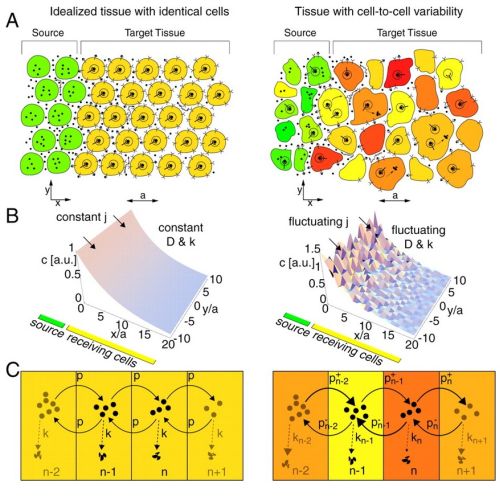Precision of the Dpp gradient.
Morphogen concentration gradients provide positional information by activating target genes in a concentration-dependent manner. Recent reports show that the gradient of the syncytial morphogen Bicoid seems to provide precise positional information to determine target gene domains. For secreted morphogenetic ligands, the precision of the gradients, the signal transduction and the reliability of target gene expression domains have not been studied. Here we investigate these issues for the TGF-beta-type morphogen Dpp. We first studied theoretically how cell-to-cell variability in the source, the target tissue, or both, contribute to the variations of the gradient. Fluctuations in the source and target generate a local maximum of precision at a finite distance to the source. We then determined experimentally in the wing epithelium: (1) the precision of the Dpp concentration gradient; (2) the precision of the Dpp signaling activity profile; and (3) the precision of activation of the Dpp target gene spalt. As captured by our theoretical description, the Dpp gradient provides positional information with a maximal precision a few cells away from the source. This maximal precision corresponds to a positional uncertainly of about a single cell diameter. The precision of the Dpp gradient accounts for the precision of the spalt expression range, implying that Dpp can act as a morphogen to coarsely determine the expression pattern of target genes.

- Development 2008 Mar;135(6):1137-46
- 2008
- Developmental Biology
- 18296653
- PubMed
Enabled by:
